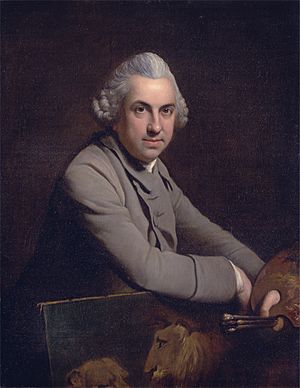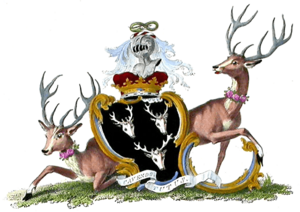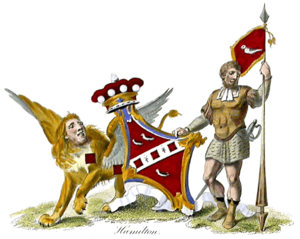Charles Catton facts for kids
Quick facts for kids
Charles Catton
|
|
|---|---|

Self-portrait (1769)
|
|
| Born | 1728 Norwich, Norfolk
|
| Died | 28 August 1798 New Road, London
|
| Nationality | British |
| Known for | Oil painting, Landscape painting |
| Movement | founding member of the Royal Academy |
Charles Catton (1728–1798) was an important English artist. He was known for painting coaches, landscapes, animals, and people. He was also one of the first people to help start the famous Royal Academy of Arts. He is sometimes called Charles Catton the elder to tell him apart from his son, who was also an artist.
Contents
Who Was Charles Catton?
Charles Catton was born in Norwich, England, in 1728. People say his father had many children, possibly 35, from two marriages!
Early Life and Training
When he was young, Charles Catton became an apprentice. This means he learned a skill by working for someone experienced. He worked for a London coach painter. Some stories say he was an apprentice to a carpenter instead. He also studied drawing at the St. Martin's Lane Academy.
A Talented Artist
Charles Catton became well-known for painting landscapes and animals. But he was also good at painting people. He even had a talent for creating funny designs. In 1781, he made an etching called The Margate Packet. An etching is a type of print made by carving a design into a metal plate.
He joined the Society of Artists of Great Britain. He showed many of his paintings in their art shows between 1760 and 1764.
Royal Academy and Royal Painter
Charles Catton was especially good at painting coaches. He created beautiful designs for carriages. These included fancy floral patterns and special family symbols called heraldic devices. His work was very high quality. Eventually, he became the official coach-painter for King George III.
He was one of the first people to help create the Royal Academy. This is a very important art institution in London. In 1784, he was the leader of the Worshipful Company of Painter-Stainers. This was a special group for painters.
He showed his art at the Royal Academy every year. He did this from when it started until the year he died. He usually showed landscapes. But sometimes he showed paintings of people or animals. His last paintings shown there were Jupiter and Leda and Child at play. He also painted a large picture for the church of St Peter Mancroft in Norwich. This painting was called The Angel delivering St. Peter.
Later Life and Legacy
Charles Catton stopped painting a few years before he passed away. He died at his home in London on August 28, 1798. He was buried in Bloomsbury cemetery.
His son, Charles Catton the younger (1756–1819), also became an artist. He was known for painting scenes for plays and making detailed drawings of places. He later moved to the United States.
Charles Catton the elder also taught other artists. Some of his students included John Durand, his own son Charles Catton the younger, his brother James, and William Owen. William Owen even became a member of the Royal Academy himself!



